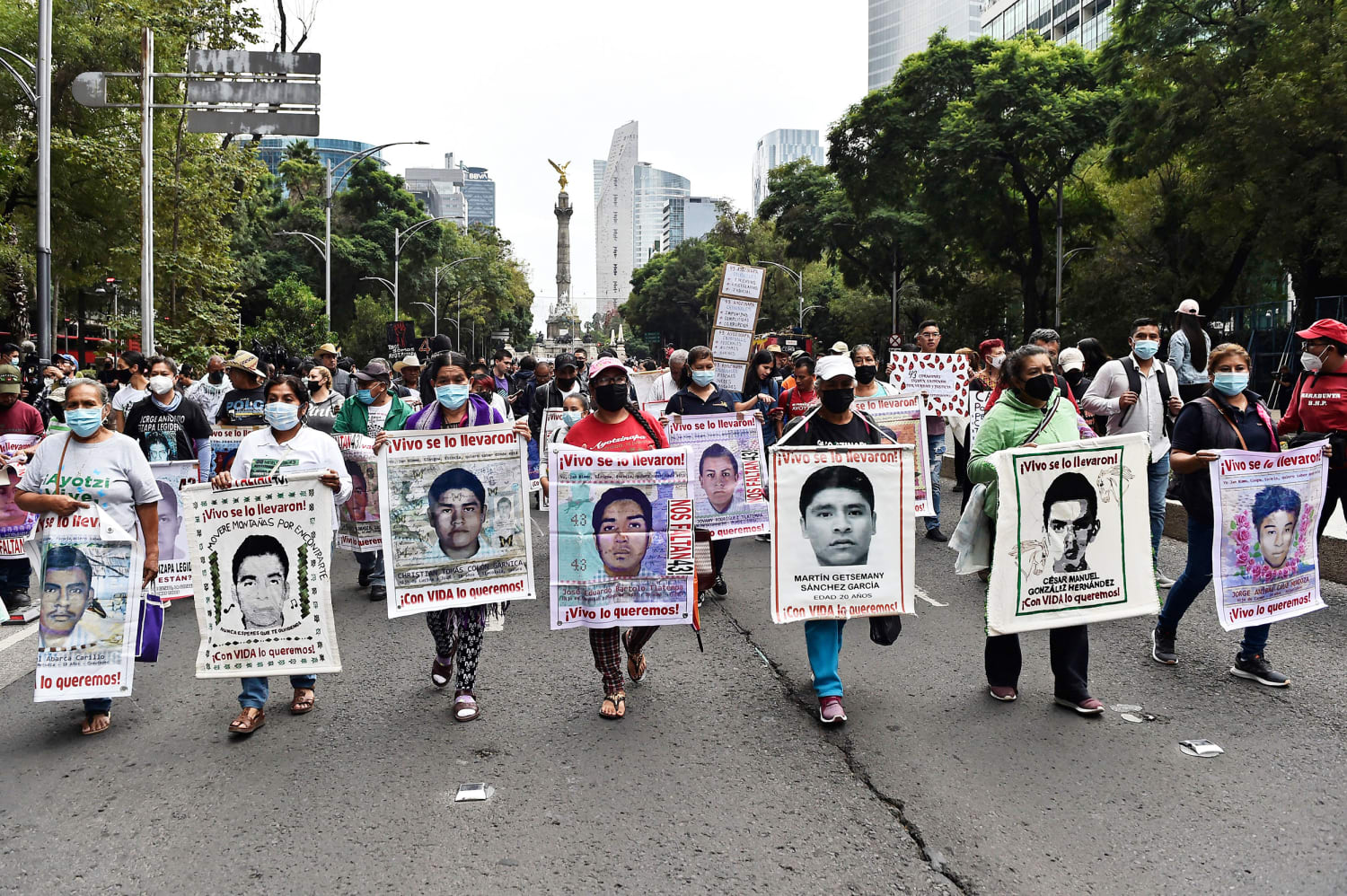
The five-member multinational panel investigating the 2014 disappearance of 43 students from the Ayotzinapa Rural Teachers’ College, in Mexico, has not been able to determine what exactly happened to them, the investigators said Tuesday at a press conference.
The investigators with the Interdisciplinary Group of Independent Experts (GIEI), a panel appointed by the Inter-American Commission on Human Rights nine years ago, unveiled their sixth and last report outlining what they know so far, as well as some of the obstacles they encountered, in connection with one of Mexico’s most notorious human rights cases.
The GIEI investigators said they have gathered enough evidence to suggest that Mexican security forces at the local, state and federal levels “all collaborated to make them disappear,” said panel member Carlos Beristain during the press conference.
The 43 missing students from the Ayotzinapa Rural Teachers’ College came under attack in the city of Iguala, Guerrero, on Sept. 26, 2014. Only the remains of three students have been formally identified since.
The administration of former President Enrique Peña Nieto had concluded the 43 students had been kidnapped by corrupt police in cahoots with a local drug gang that believed they had been infiltrated by members of a rival outfit. The gang then killed the students and burned their bodies, their report said at the time.
The GIEI has said that account is riddled with errors.
According to Beristain, the GIEI’s findings show authorities knew about the abduction of the students and were complicit in their disappearances.
The army, navy, police and intelligence agencies knew, minute by minute, where the students were, the GIEI said in their report.
At least 500 calls about the incident were recorded at a government security surveillance center in the crucial hours after the students went missing, according to the report.
The GIEI also found that members of the navy and the army carried out secret, unreported joint operations and manipulated information relevant to the case.
Soldiers who had initially testified they were in their barracks on the night of the disappearance were linked to locations where the students are believed to have been taken, investigators said.
According to the panel’s documents, photographs and testimonies, the army and navy had arrested five suspects in the case who were previously thought to be missing.
Experts also found discrepancies over the army’s reporting of the discovery of the body of Julio César Mondragón, one of the Ayotzinapa students who died that night. The army told the GIEI the differences were an “involuntary error.”
Mexico’s armed forces have long denied having information about the disappearances. The Army and Navy did not immediately comment on the findings.
With the GIEI’s investigation officially ending next week, the motives behind the disappearances remain unclear.
Part of the challenge, investigators said, came from authorities not being forthcoming with information. They even accused the Mexican military of “obstruction of justice.”
“They’ve lied to us, they’ve responded with falsehoods, we have no more information,” Beristain said. “We can’t investigate like this.”
Mexican President Andrés Manuel López Obrador said his administration plans to continue investigating the case despite the GIEI having concluded its task. From high-ranking officials to civilians, between 120 and 130 people have been arrested in connection to the students’ disappearance, López Obrador said in his daily press conference Tuesday.
When López Obrador took office in 2018, he created a “truth commission” to look into the case and renewed the mandate of the GIEI, which had been formed in 2014.
اكتشاف المزيد من ينبوع المعرفة
اشترك للحصول على أحدث التدوينات المرسلة إلى بريدك الإلكتروني.
